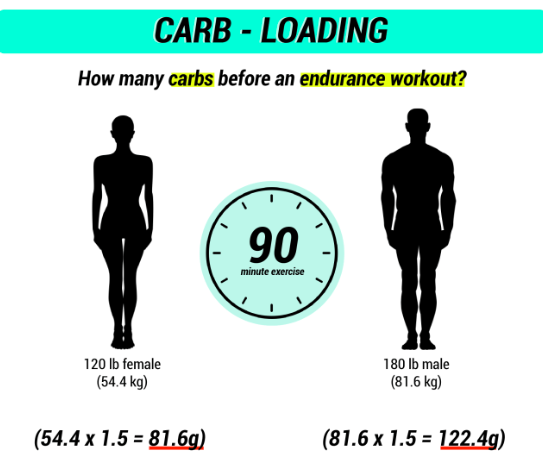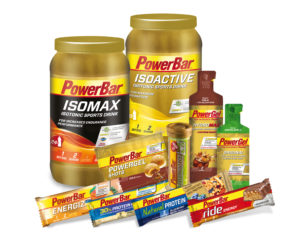As mentioned, we look further into recovery and nutrition in this blog. It is important to first clear out again what we are aiming for, to increase the training adaptation so that a higher fitness level is created on the long term. To optimize training adaptation, it is not only important to determine whatyou are taking in, but certainly also when. You want to be able to deliver the best performance during the training sessions in order to maximize the training outcome. Then it is important to give the body a rest and to replenish all supplies that the body needs to repair the damage and to appear just a little stronger the next training.

Optimize food and fluid intake prior to your work-out
It seems logical but is often overlooked, you want to be able to put all the energy in the training and not lose any energy to digest food. The nutrients must already be in the right place in the body when you start your workout. Moreover, the digestion of just ingested food is much worse if there is a heavy effort at the same time. Your body simply wants to be able to focus on 1 goal.
The body can store food supplies. Of course we know that about fats (fats can be stored in the fat cells almost indefinitely), but that is also possible to a certain extent with carbohydrates. You can cover the cells in the body with sugars (muscle glycogen) and much of what remains will be stored as fat. Topping off muscle glycogen stores is a smart strategy to apply, the energy is then ready in the cells and can be used easily and quickly. This can be done up to 2 hours before exercise with “slow” carbohydrates (oatmeal, pasta, whole-grain bread, etc.) or up to 30 minutes before exercise with “fast” carbohydrates (fruit juice, energy bar, fruit, etc.) Then you want to leave the digestive system alone so that the body can concentrate on the effort.
Eating and drinking during training
For a training session longer than 60 minutes, it is advisable to replenish the sugar reserves every 15 minutes by taking in very small portions of “fast” sugars, preferably liquid. Read; start right from the start of your work out by taking in sugars every 15 minutes.
As mentioned earlier, it is advisable to practice this several times with different products to see what you like best. For example, many people suffer from mucus formation when taking energy drinks or after a while notice that they experience some abdominal cramps.
Sufficient intake of fluid is very important of course. It causes, among other things, thinning of the blood, making transport to the cells easier. It also supports the removal of waste that will be released into the cells. For this, too, a rhythm of every 15 minutes is good to stick to. This involves a few sips per 15 minutes, depending on the weather conditions and your feeling of thirst.
Nutrition after training to stimulate recovery

In the previous blog you could read that fatigue is partly the result of a decrease in energy reserves in the body, muscle glycogen (sugar in the muscle cells). You want to replenish this energy as quickly as possible and the best moment for this is immediately after the effort, you could say in the time of exudation. You prefer to do this again with “fast” sugars so that it runs quickly and smoothly. An extensive snack / portion of energy drink high in “fast” sugars is beneficial. Many of you will be delighted to read that an alcohol-free wheat beer is a great recovery drink;).
In addition to the deficiencies in muscle glycogen, you probably also have a mineral deficiency in the body. Mineral water or a small salty snack is also recommended for this. It is also an option to add a small amount of sea salt or Himalayan salt to your sports drink that you use during exercise. Take no more than one teaspoon for this.
And last but not least, muscle damage has occurred. Certainly after heavy explosive strength training it is necessary to lend a hand to muscle damage. We do this with the building materials that our body extracts from proteins / amino acids. These proteins can easily be taken at the same time as the carbohydrate snack, while still sweating. Because the intake of sugars releases the hormone insulin (a hormone that opens the cell), it is important to combine these so that the proteins can enter the cell more easily to do their work there.
Later in the day, or at the start of the next day, you pick up your basic eating plan again. See for this the blog about nutrition of 12 June.
Do it yourself!
When you want to optimize your diet yourself, the first thing that you have to put your attention into is planning. Look carefully when you plan your training moment and what that means for your eating rhythm.

It is also useful to see where you plan your strength training and where your endurance training. The recovery after a heavy strenght work out requires a more careful and longer period. A longer recovery period with more protein and high-fat meals around you help you to keep up the upward trend.
Good luck with making the recovery plan. Hopefully you can go a long way with both blogs. If you still find it difficult and would like some advice, feel free to ask your questions in the comments below or send me an e-mail with your schedule to; [email protected]


